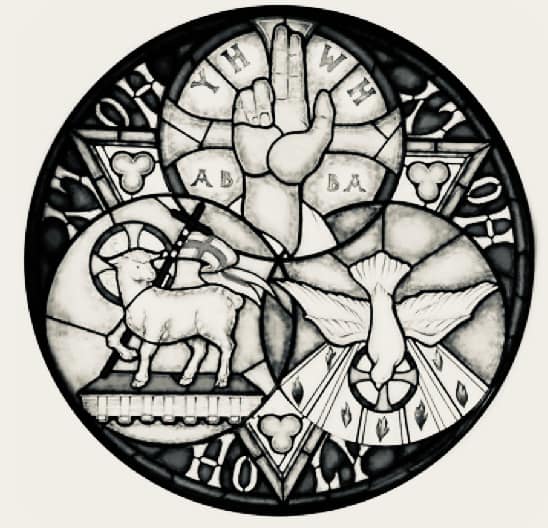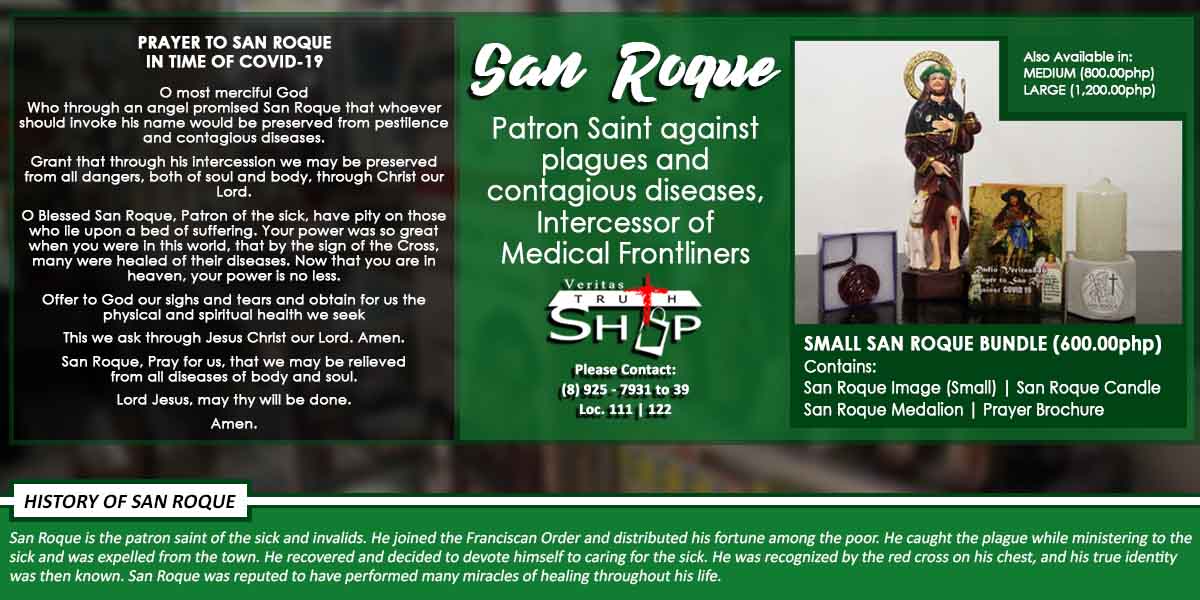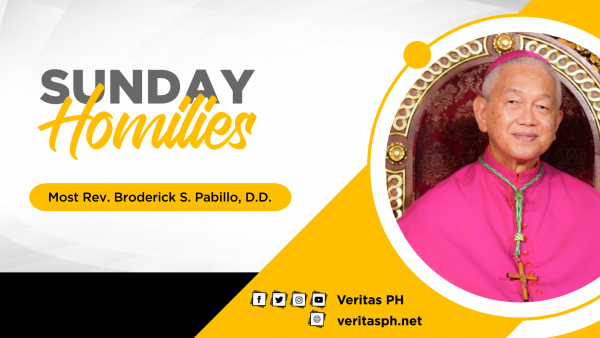591 total views

s1S#140 “Trinity” (A)
According to the Catechism of the Catholic Church (no. 261), “the mystery of the Most Holy Trinity is the central mystery of the Christian faith and of Christian life. God alone can make it known to us by revealing himself as Father, Son, and Holy Spirit”; (for the development of the doctrine from its scriptural references to its definition, cf s1S#33, 5/30/21 and s1S#89, 06/12/22). But in our limited way, we understand that God is Three in One. He is Father, Son, and Holy Spirit. Each is a distinct Person. Each fully shares in the one divine nature, (cf CCC nos. 234, 253-256).
In today’s gospel, John 3:16-18, what is implied in the conversation of Jesus with Nicodemus is the work of the Triune God, unraveled in the economy of salvation, fulfilling Their unique mission, yet acting in perfect unison. The Father is the one Who sent the Son into the world and willed that He gives His life for the salvation of all. The Son was sent and perfectly fulfilled the will of the Father, uniting humanity with divinity, (3:16-17). The Holy Spirit is the Promise of Father and Son Who proceeds from Them and descends upon the world, animating and making it possible to share in the very life of the Most Holy Trinity. In other words, love prompted the Father to send the Son who was the bearer of the Spirit, the source of eternal life.
If the mystery is hard to comprehend, it should be. Our limited intellects can only grasp a shadow of the reality of God. But the diverse insights into God’s nature should never be treated abstractly or in a detached doctrinal way. For what the Scriptures reveal to us are Persons in relationship inviting us to share in that very life of the Trinity, the life of love that binds them, the love that saves us and so binds us to them and one another. May we continue to live in “the grace of the Lord Jesus Christ and the love of God the Father and the fellowship of the Holy Spirit”, (2 Cor 13:13). Amen.
s1S#33 “Trinity” (B)
The understanding of one God in three divine persons: Father, Son, and Holy Spirit was alien to Israelites and unique to the Christian faith. The belief as so defined was reached only in the 4th and 5th centuries AD. Thus the word Trinity (concerning God it was attributed to Tertullian ca. AD 145-220), does not occur in the Bible and therefore not explicitly and formally a biblical belief. At best, a Christian reading of the Hebrew Bible sees a background to later belief in earlier texts, a sort of retrospective interpretation of this earlier corpus of scripture in the light of later theological developments.
The Christian reading of Ex 34:1-11 considers the attributes of mercy and fidelity of God to foreshadow qualities that will be later seen as personal in God and something relational, going beyond the Israelites’ perception of simply a multi-faceted God. While Dt 4:32-40 which proclaims a God of unsurpassed greatness who comes close to a people whom he chooses, hints at the “otherness” and at the same time the closeness of God, his transcendence and personal love. In Proverbs, its personification of Wisdom finds her present with God in the entire process of creation, ch. 8:22-31, the Spirit of God at work.
The elements of the trinity of persons within the unity of nature “appear” in NT in the use of the terms Father, who is “the God” (‘ho theos’), Son, who is Jesus, the Son of God (‘ho hyios tou theou’), and Spirit (‘pneuma hagios’). The personal reality of the Spirit emerged more slowly than the personal reality of the Father and Son which are personal terms. Thus we may distinguish three relevant categories of NT texts in the development of Trinitarian thought: First, is the clear distinctions between God and Christ, (Rom 8:31ff; 1 Cor 11:3, 15:20-28; 2 Cor 4:4-6), and the unity of the Father and the Son is stressed, (Mt 11:27; Jn 10: 30, 14:9-11, 20:28; Col 2:9; 1Jn 5:30). Second, is a similarly close relationship between Jesus and the Holy Spirit, (Lk 3:22; Acts 2:33; Rom 8:26-27,34; Jn 14; Gal 4:6). The Holy Spirit in NT, though not in the exact sense of the later credal formula, comes to represent both the presence and activity of God and the continuing presence of Jesus Christ in the Church. Third is where the three persons of Trinity are mentioned in the same context- in the baptismal formula of Mt 28:19, (cf also 1 Cor 12:4-6; Eph 4:4-6; 1 Pt 1:2) and the “apostolic blessing” and considered the earliest formula known in 2 Cor 13:13, where Christ stands at the center as the immediate source of grace (Rom 16:20; 1 Cor 16:23), and the love of God that brought about the mission of Christ and is the ultimate source of all gifts, including the Spirit who binds the community in fellowship with one another and the community with the trinitarian community: “the grace of the Lord Jesus Christ and the love of God and the fellowship of the Holy Spirit be with all of you”.
s1S#89 “Trinity” (C)
The belief in one God in three divine persons, the Father, the Son, and the Holy is unique to the Christian faith but as so defined (re: nature and relations, etc) was reached only in the 4th and 5th centuries AD. It must be understood that the unity of nature does not appear as a problem in NT and indeed could only rise when a philosophical investigation of the term nature as applied to God was begun.
What we have from the Scriptures are citations like mentioning the three in the same context, e.g. in the baptismal formula of Mt 28:19, (cf also 1 Cor 12:4-6; Eph 4:4-6; 1 Pt 1:2); and the “apostolic blessing” and considered earliest formula known in 2 Cor 13:13, where Christ stands at the center as the immediate source of grace (Rom 16:20; 1 Cor 16:23), and the love of God that brought about the mission of Christ and is the ultimate source of all gifts, including the Spirit who binds the community in fellowship with one another and the community with the trinitarian community: “the grace of the Lord Jesus Christ and the love of God and the fellowship of the Holy Spirit be with all of you”. This is the opening greeting at the beginning of every Eucharistic celebration.
What the Trinity is all about we may not comprehend. But living the “Trinitarian life” we can try to emulate. Remember that from baptism we receive the indwelling of the three divine persons. They live in us, but do we live in them? How? With God the Father whose love brought about the mission of Christ for our salvation (John 3:16), ‘knowing what we need even before we ask Him’ (Lk 12:22, 39-31), we should live daily in complete trust in his fatherly providence. With Jesus whose coming and total self-giving brought us life (John 15:13), life to the full, we should follow his humble life of service and self-donation to others. With the Holy Spirit who was promised by the Son and sent by the Father in his name who will teach us everything (John 14:26), we should listen continually to the Spirit especially for its guidance and direction so that we can learn God’s will for us and be able to accomplish it making us truly the adopted children of God our loving Father! And as the economy of salvation has revealed to us the different roles of the three divine persons yet remain one God, may each one of us help build the one body of Christ which we constitute by sharing the unique gifts each one of us has received. Amen.















